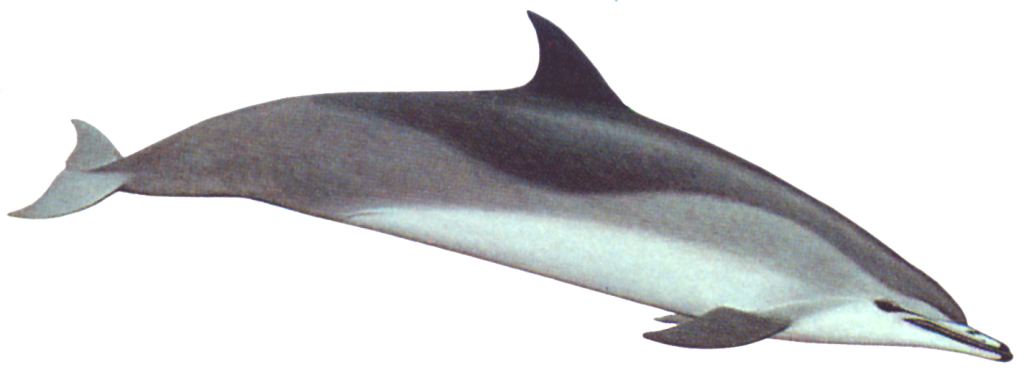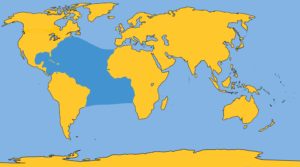Family: Delphinidae
Genus: Stenella
Species: S. clymene (Gray, 1850)
Taxonomic Note: Until 1981, when William F. Perrin authored “Stenella clymene, A Rediscovered Tropical Dolphin of the Atlantic”, the clymene dolphin was considered a variation of Stenella longirostris.
The clymene dolphin is a little-known animal of the Atlantic Ocean, and although it very much resembles the spinner dolphin Stenella longirostris (their range even overlaps in certain areas), it is doubtless a distinct species based on skull and dental comparisons.
Physical Description: The animal looks much the same as Stenella longirostris, but the flippers and dorsal fin are about ten percent smaller. As the name implies, the rostrum is shorter but also thicker than other spinners.
Color: These animals possess a distinct three-toned color pattern. The dorsal region is dark from the melon to the mid-peduncle region, dropping down convexly on both sides. A gray region extends from the eyes along the flanks, encompassing the peduncle region to the area of the anus. The white coloration extends from the lower jaw to the anus. The white field is flecked with very small irregular dots, most numerous where the white and gray regions meet. The color of the rostrum varies from all dark above, white on the sides, with black trim along the upper and lower lips, to more uniformly dark overall., although the former seems most common. The flippers can be either all black on both sides, or dark underneath with white above, trimmed along the leading margin with black. The eyes have a dark circle with a thin line extending to the demarcation of the rostrum.
Fins and Flukes: The dorsal fin is well defined, falcate, nearly pointed, and located on the mid-back region. The flippers are a bit smaller than other spinners and pointed at the tips. The well-spread flukes are thin and pointed at the tips with a well-defined median notch.
Length and Weight: They reach a known length of 7 ft (2m) and an estimated weight of 200 lb (90kg).
Teeth: There are 38 to 49 sharply pointed teeth in each row of the upper and lower jaws.
Feeding: They are known to feed on small fish and squid, and are thought to be mid-water or nocturnal feeders.
Breathing and diving: No information is available.
Mating and Breeding: Almost nothing is known. It has been suggested that newborn are about 30.3 in (77 cm).
Herding: They are thought to form small herds.
Distribution: They are known from the tropical and sub-tropical Atlantic. Sightings have occurred in the southeastern United States, Gulf of Mexico, Caribbean Sea, northwest coast of Africa, and the mid-Atlantic Ocean.
Migration: No information is available.
Natural History Notes: These animals have been observed only in deep water. Spinning has been observed but was less dramatic and less complex than other spinners. In the Gulf of Guinea and off West Africa, they have been observed riding bow-waves.
CLYMENE DOLPHIN DISTRIBUTION









